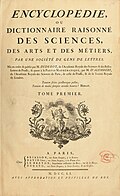Conservatoire national des arts et métiers
Expression error: Unexpected < operator.Expression error: Unexpected < operator.
 | |
| Type | Public, Graduate engineering school |
|---|---|
| Established | 1794 |
| Students | 90.000 |
| Location | , |
| Affiliations | héSam université[1] Conférence des Grandes Écoles[2] |
| Website | http://www.cnam.fr |
The Conservatoire national des arts et métiers (French: [kɔ̃sɛʁvatwaʁ nɑsjɔnal dez‿aʁ e metje]; CNAM) is a graduate engineering school in Paris, France. It was created in 1794.[3]
Its different programs lead to the following French and European degrees:
- Ingénieur CNAM (CNAM Graduate engineer Masters level program)
- Master of Science & PhD doctorate studies
- Mastères Spécialisés (MS)
- Massive Online Open Courses
Classes and research are performed mainly in French and English languages. Students from a dozen nationalities participate in the different programs at CNAM.[4]
Former student
- Lucien Servanty (1943), head of design of Concorde
Conservatoire National Des Arts Et Métiers Media
For the first time in history, in 1851, the French physicist Léon Foucault used a pendulum in order to prove the rotation of Earth around its own axis. The pendulum is exhibited at the Museum of Cnam on the Parisian campus and at the Panthéon.
Diderot and D'Alembert's Encyclopedia, as part of the French Encyclopedist movement during the French Enlightenment era, paved the way for the creation of an institution dedicated to arts and crafts.
Paris-Saclay University is a partner of Cnam, with which the latter shares a doctoral college. Paris-Saclay ranks 13 in the world in 2020 according to ARWU, 1st in Mathematics and 9th in Physics (1st in Europe),
Commemorative plaque of Gaston Planté on the Parisian Campus of CNAM, inventor of the first lead-acid accumulator and first reusable lead-acid battery.
Exhibit of the Micral N, at the CNAM Industrial Design Museum, on the parisian campus of CNAM – first micro-computer using a micro-processor in the world, invented by alumnus François Grenelle.
The Colomban Cri-cri (Cricket) F-PRCQ exhibited under an Airbus A380 at the 2011 MAKS airshow, the world's first all-electric (CO2-neutral) 4-engine aircraft developed by EADS Innovation Works and manufactured by Aero Composites Saintonge, following alumnus Michel Colomban's Cri-Cri aircraft series.
References
- ↑ Members
- ↑ Conservatoire national des arts et métiers
- ↑ Le Conservatoire National des Arts et Métiers (CNAM) (in French)
- ↑ Le Cnam Archived 2016-02-04 at the Wayback Machine (in French)
Other websites
| Wikimedia Commons has media related to Lua error in Module:Commons_link at line 62: attempt to index field 'wikibase' (a nil value).. |
- Official website (in French)
- Official website (in English)
- Official website CNAM lebanon Archived 2011-03-15 at the Wayback Machine (in French)






